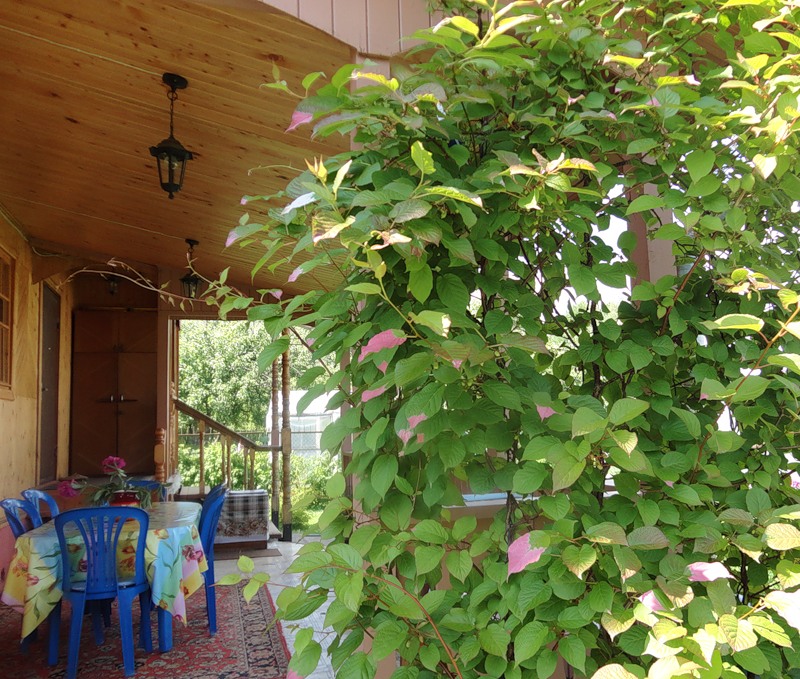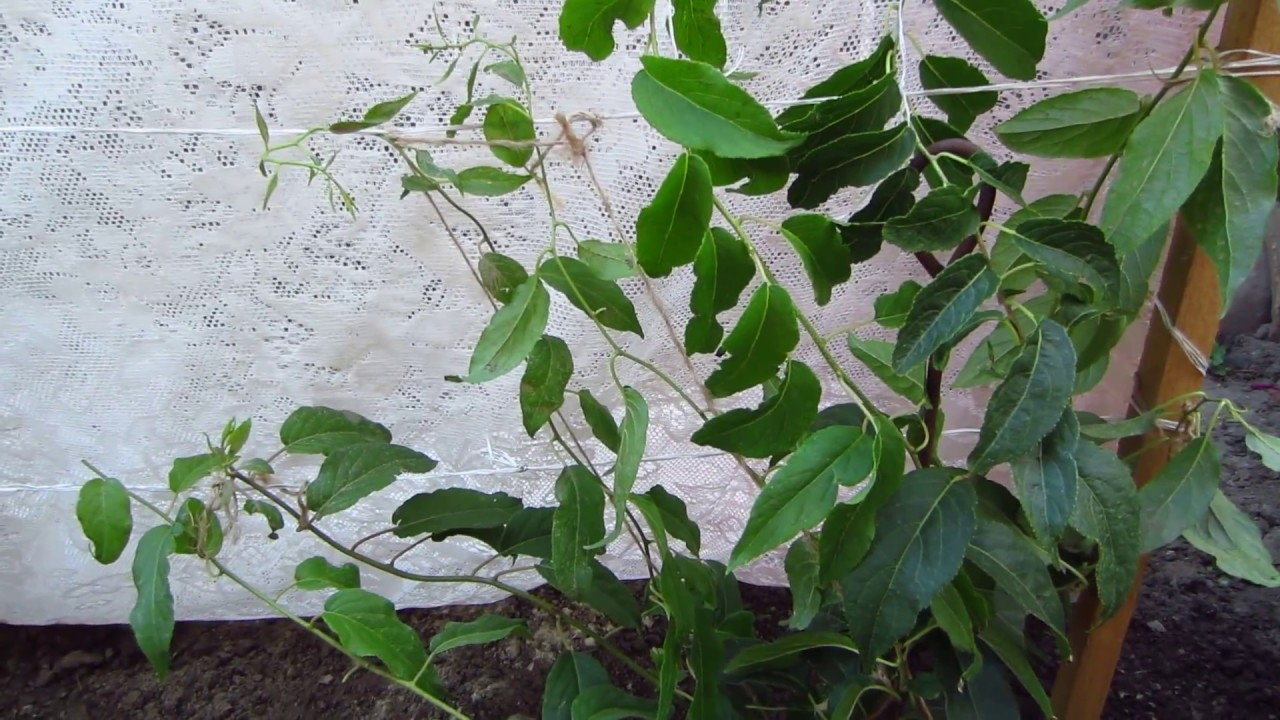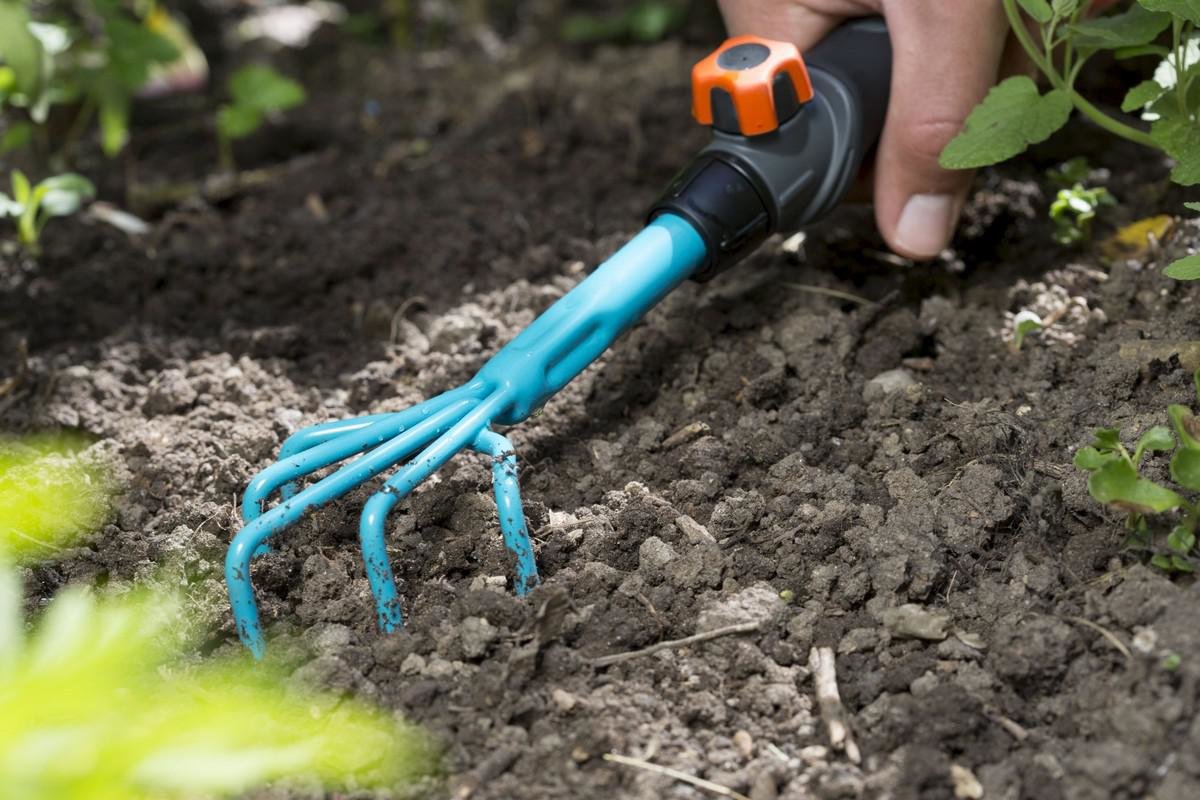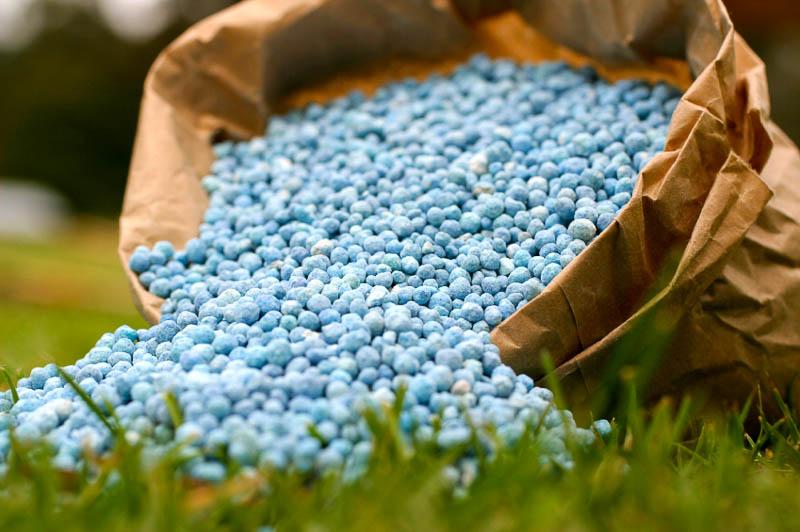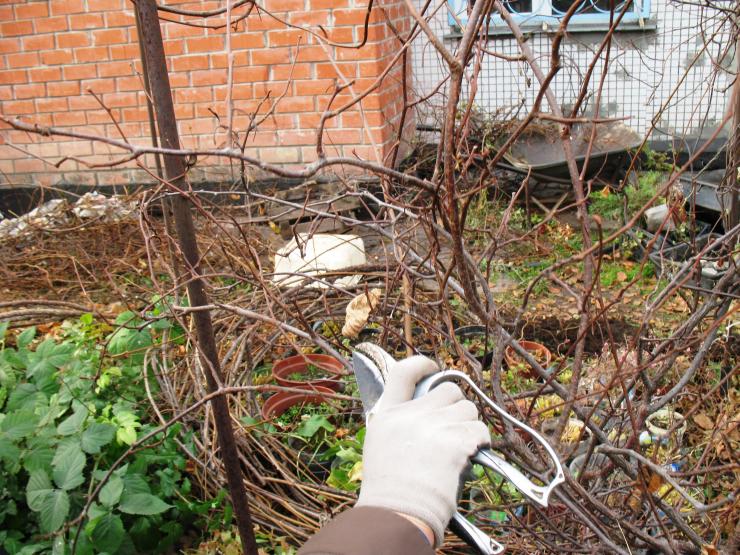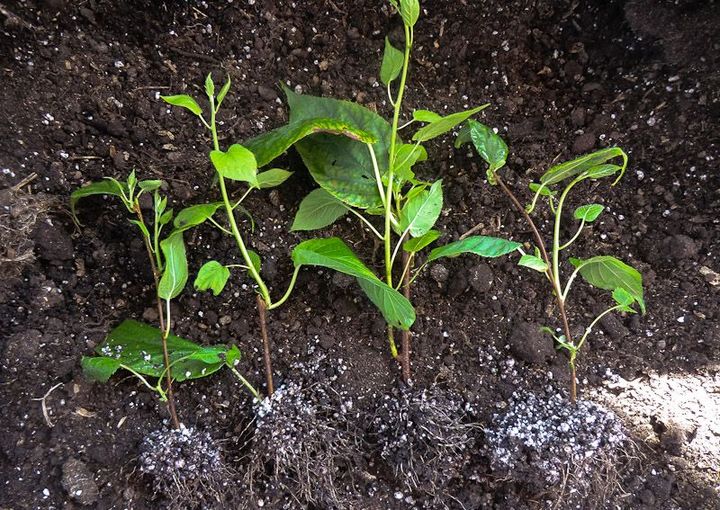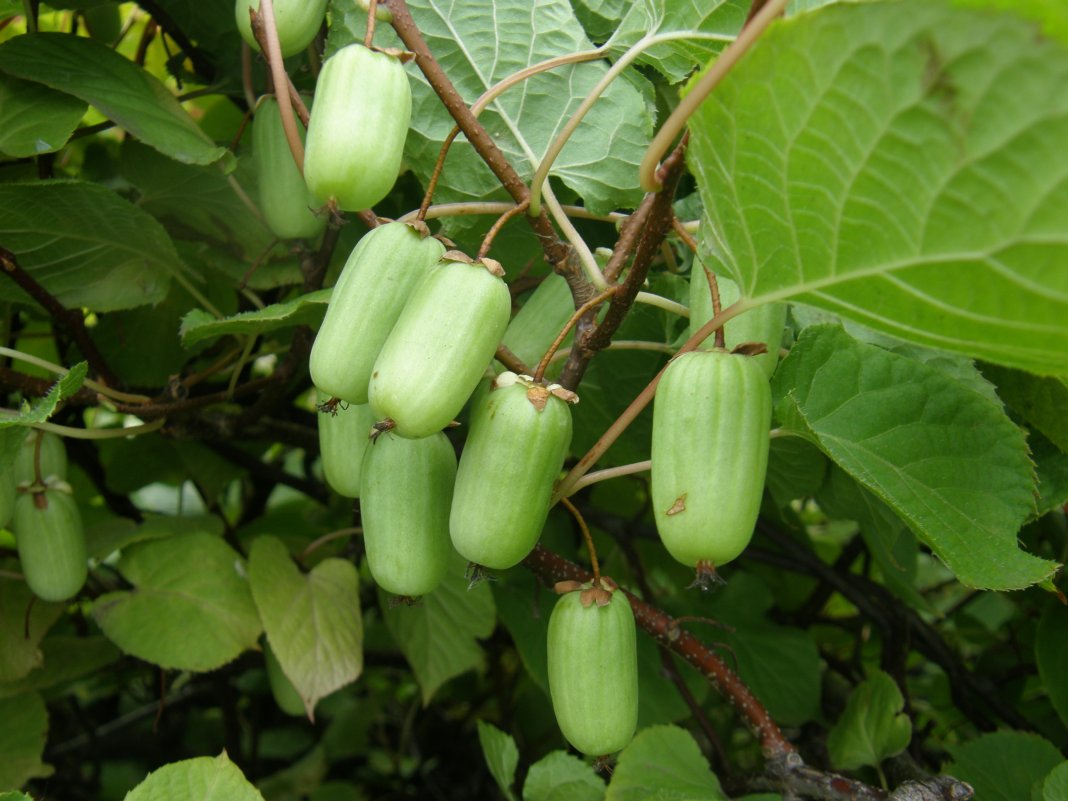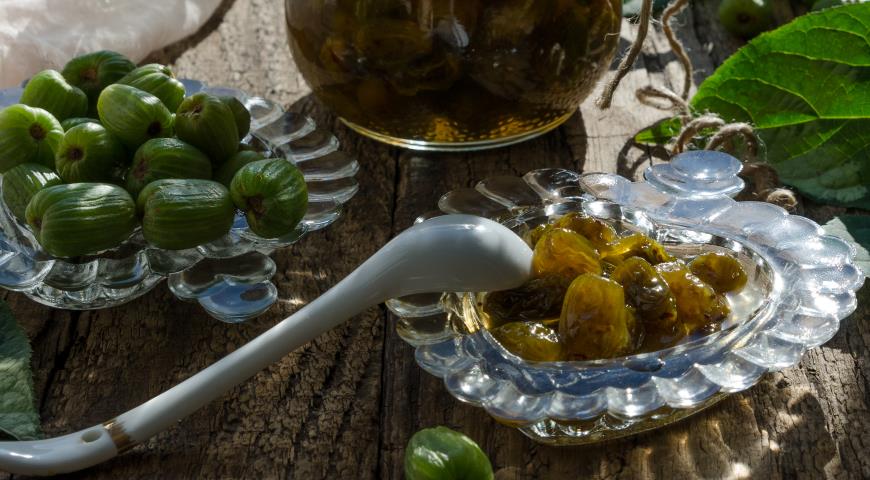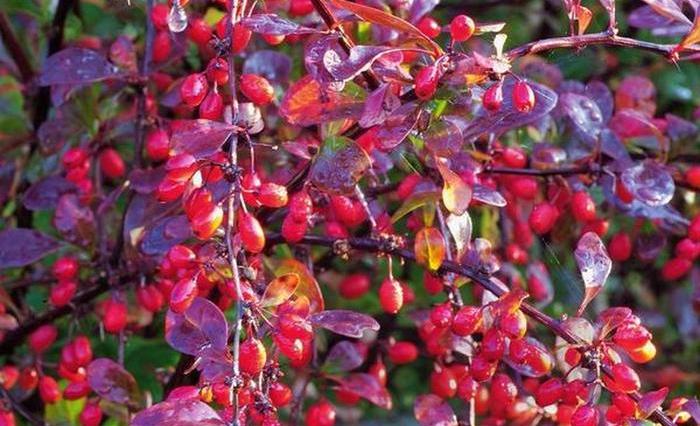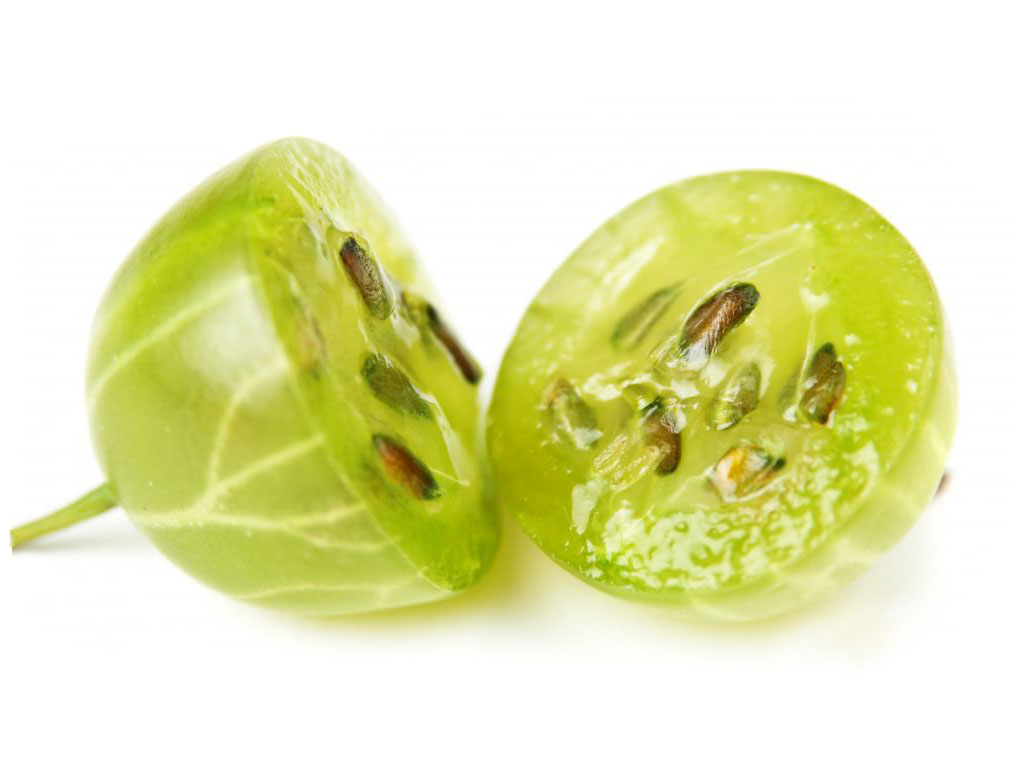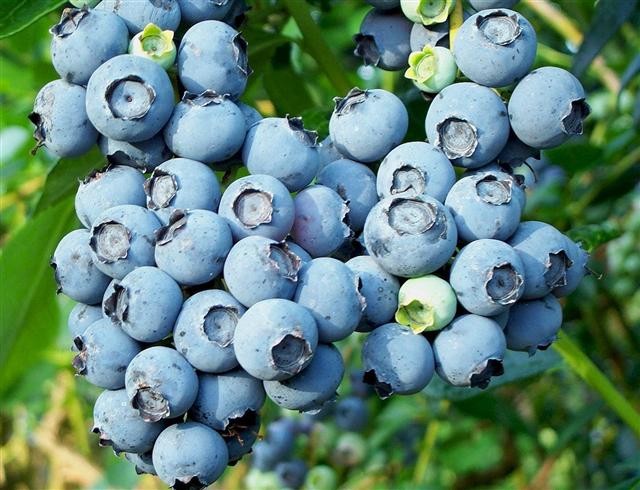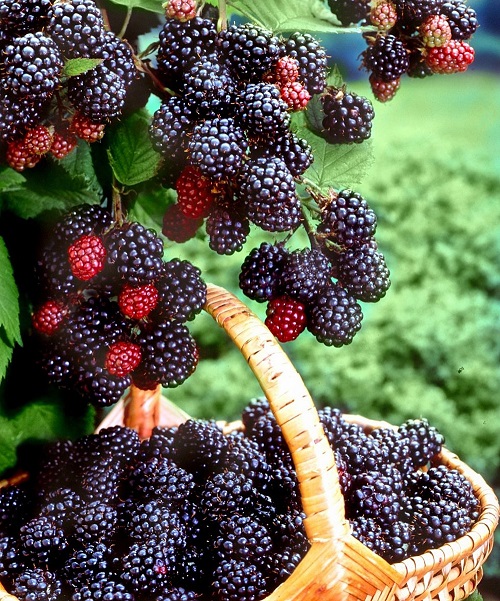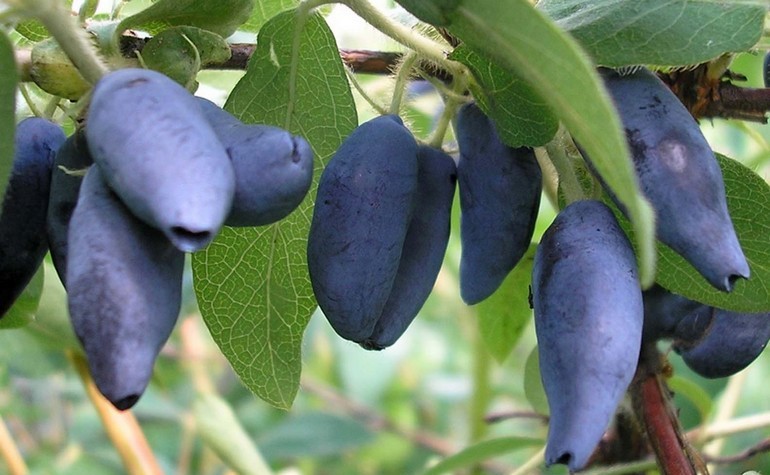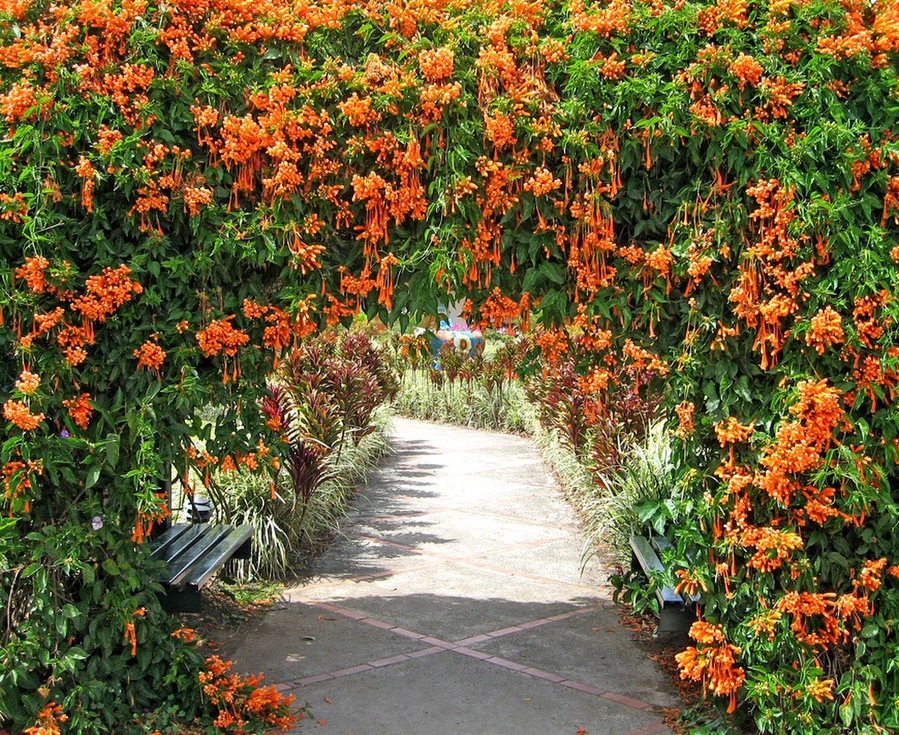Content:
Actinidia looks very exotic in the garden. It not only decorates the site, but also bears tasty healthy fruits. At the same time, planting and caring for a woody liana will not cause difficulties even for novice gardeners.
The middle zone of Russia is ideal for growing some varieties of actinidia. The fruit plant is not afraid of harsh winters, temperature changes, cool summers.
Planting actinidia seedlings
The choice of planting material
Before planting actinidia, you should choose high-quality planting material. There are 4 tips for choosing seedlings, from which you can subsequently grow a healthy fruiting shrub:
- It is better to buy actinidia seedlings in nurseries, specialized stores;
- A young tree should have a closed root system. The root of the vine is very fragile; it cannot be left outdoors for a long time. Therefore, seedlings should be bought, the rhizome of which is hidden in a container, package or sold together with the ground;
- For planting, planting material is suitable not younger than 2 years old and not older than 3.5 years;
- In order for the woody vine to bear fruit, male and female specimens of the plant must be planted on the site. Therefore, it is better to buy seedlings immediately for men and women.
Landing dates
It is allowed to plant a shrub in the fall. However, most often planting takes place just before the summer season, so that the owner of the garden can observe the development of the plant.
The gardener decides on his own when to plant a crop in a permanent place. However, in the spring, this must be done before the juices begin to move along the trunk and the buds come to life, or wait until the end of April.
If autumn is chosen, then disembarkation is carried out in September-October. The main thing is that the seedling, which finds itself in the soil, has several weeks in reserve before prolonged frosts.
The soil
Actinidia develops best in slightly acidic or acidic loose soil. The pH level should be in the range of 4-5 units.
Well-drained soil is ideal for planting actinidia. The culture will feel comfortable on small hills, where water flows are organized. The soil is fertilized with organic matter before planting. Lime, potassium chloride must not be added there.
A sunny place with shade during the hottest hours is suitable for culture. However, until it is 3 years old, a young tree is best hidden under a canopy so that the rays do not burn the leaves.
Good predecessors and neighbors of actinidia
Before planting actinidia, you need to carefully study the site and choose a place where friendly crops grow. It is not recommended to plant a shrub next to an apple orchard.
It is recommended to plant an exotic crop next to peas and other legumes, hazel, asters, calendula.
Correct fit
How to plant actinidia in the spring? To do this, you need to follow a step-by-step process:
- The shrub needs space. The distance to other plants should be at least 1.5-2 meters;
- Immediately you need to take care of the support for the actinidia. This is a prerequisite.
A trellis for actinidia is suitable. You can make an arch, ladders or any other frame. The culture grows very beautifully on the wall of the house; for this, a wall support in the form of a grid is made. Thus, the cottage will look beautiful and decorative;
- A few weeks before planting actinidia in the spring, a planting hole is prepared. It is pulled out 60-70 cm in depth and width. Drainage is necessarily poured there. Pebbles, particles of bricks, ordinary stones will do. It is worth abandoning construction crushed stone, since lime is present in it. Then everything is covered with a soil mixture of coal, humus, superphosphate. After a few days, the soil will settle, and plain earth is poured into the pit;
- On the day of planting, you should pay attention to the preparation of seedlings. All dry twigs are removed, the roots are washed in a clay mash;
- The prepared planting pit is moistened with 5-8 liters of water;
- In the pit, they make a mound or a slide from plain earth. The roots are straightened and transferred to this hill. One hand of the gardener holds the rhizome, and the other gently places the roots on the ground. The root collar should not go underground. It is left flush with the ground surface;
- After the hole is filled with garden soil and re-moistened. One bush consumes from 10 to 20 liters of water;
- Place next to the seedling is mulched. Compost, peat are ideal.
The procedure for planting actinidia in autumn is exactly the same as for spring planting. The only condition is that this must be done 20 days before prolonged frosts. For planting before winter, healthy seedlings are also taken, which are no more than 3 years old.
Culture care
If the planting was successful, then in a few weeks the seedlings will begin to come to life and grow. Now the main thing for actinidia is leaving. It is simple, it includes weeding, loosening, watering, fertilizing, pruning, preparing for winter.
The first thing to do with the seedlings that have taken root is to start tying them to the support. Thus, the plant will begin to fulfill its main purpose - to wrap around the support and stretch up.
You need to weed and loosen the soil several times a month. It is best to do this after the rain. Then the weed is better removed, and loosening contributes to the saturation of the roots with oxygen. Due to the fact that the root system of the vine is located shallow in the ground, loosening is carried out carefully.
Watering
It's another matter if the summer turned out to be hot and dry. Then once a week, 5-7 buckets of water are poured under the root of one plant.
Liana will like the irrigation of the leaves with moisture. To do this, you can spray actinidia with a spray bottle from the bottom to the very top. The procedure is performed in the morning and evening hours when the sun does not bake.
Top dressing
Fertilizers for woody liana are selected mainly mineral.
After the snow melts, the ground under the plant is loosened. It is impossible to dig it up because of the roots located close to the surface. At this time, a fertilizer containing nitrogen, phosphorus is applied. These formulas can be purchased if you go to the market or to the store.
After the gardener has discovered the first ovaries on the culture, a second feeding is required. The plant is fed with nitrogen, phosphorus, potassium fertilizers. To figure out how to correctly and in what quantity to apply the mixture to the ground, the instruction will help.
The third time fertilization is applied after harvesting the fruits. Again, mineral mixtures containing potassium and phosphorus are used. Usually the procedure is carried out after September 15th.
Pruning
You can trim the crop only after it has reached the age of four. From now on, she needs sanitary pruning. Liana develops rapidly under decent conditions and care, intensive growth of shoots is observed, the crown thickens. By shortening the shoots, the liana receives more oxygen, and the yield increases.
The most optimal time for pruning any kind of actinidia (Kolomikt, Argunt) is summer. After the flowers have disappeared, the owner of the site removes all dry and old shoots, thinns out the powerful crown, shortens the branches that do not bear fruit. Pruning in the fall is allowed.
After the vine reaches 9 years of age, anti-aging pruning is allowed. It involves cutting the plant to the base. Only a small stump is left, its length should be up to half a meter.
Winter hardiness of actinidia
Actinidia, planting and caring for which in the open field does not require much effort, is considered a frost-resistant crop. However, you need to take care of it before wintering. She is carefully prepared for this period.
The liana is removed from a support, trellis or arch and laid on the ground. Further, the plant takes cover. The material that is at hand will do, for example, spunbond, film. Also, the plant before winter can be sprinkled abundantly with peat, dry leaves. This procedure is usually performed for young plants that were planted several years ago. Mature vines are simply removed from the support, they do not need to be covered. In the spring, after the snow melts, the perennial vine will have to be opened and freed from the film or peat.
Reproduction of actinidia
According to gardeners, the reproduction of actinidia does not cause any particular difficulties. There are several ways to propagate a plant. Among them:
- Root offspring;
- Green and lignified cuttings;
- Dividing the bushes;
- Taps;
- Seeds.
Root offspring
Fresh shoots that are close to the ground are laid out in special grooves. The pits should contain peat, humus. Root suckers are systematically moisturized. As a result, shoots appear above the surface of the earth. They can be separated from the mother's branch after a year.
Green and woody cuttings
Actinidia is propagated by green and lignified cuttings in order to obtain a large number of seedlings. Harvesting of cuttings takes place in early summer, when the fruits are poured. Strong shoots will do. Their average size should be about 60 cm. After cutting, they are left in a container with water. And after a few hours they are cut into pieces of 8-15 cm. Each of the cuttings should have several internodes, at least 3-4 buds. Cuttings are planted in a greenhouse, in a prepared slightly acidic soil with humus, river sand, a complex nutrient mixture. You need to plant cuttings at a distance of 5-10 cm from each other. The angle of inclination of the cuttings is 60 degrees. For several weeks, they need hydration, which is carried out 4-5 times a day. Cuttings overwinter under a layer of dry foliage.In the spring, they can be opened and transplanted into the part of the garden that the summer resident chose.
By dividing the bushes
By dividing the bushes, actinidia is propagated in early spring or late autumn. The bush is completely dug out of the ground. All dried, old branches are removed. Then it is divided into two equal parts. It is necessary to ensure that the number of roots, developed shoots is the same. Parts of the vines are transplanted into prepared planting pits.
Taps
One of the easiest ways is to breed by branches. To do this, one of the long shoots is partially bent to the ground, covered with soil, spilled, mulched with sawdust. The tip of the shoot should be on the surface, this is the only way to grow a new vine. After a few weeks, the cuttings take root, a shoot grows out of it. In the fall, it can be planted as a seedling.
Seeds
Seed propagation of actinidia is considered the most effective. The seeds produce hardy, healthy plants. But the method has its drawbacks. The first is that the fruiting of vines, which were grown from seed, occurs late: 7 years after planting. The second minus is that the sex of the seedling can be determined only after its flowering.
In order for the seeds to have good germination, they must be carefully prepared for planting. The seeds are soaked for several days. During this time, they should swell. Then they are mixed with sand. The resulting mixture is moistened and left on the windowsill, periodically watered. In this form, they should be about two months. After this period, the seeds with sand are removed underground or in the refrigerator for another two months. After all the procedures, the seeds are ready for planting. They are planted in spring or autumn. Planting depth - 1 cm. Row spacing - 10-15 cm. Seedlings overwinter under a layer of dry foliage and straw.
Harvesting and storage
Gardeners take off a full harvest after 7 years. From this time on, the plant will delight the owners with high-quality berries for a long time. It is believed that the average age of actinidia is 40-60 years.
Berry picking starts at the end of summer. The harvest is usually removed in 3-5 receptions due to the fact that the fruits do not ripen together. Collect them using a plastic bucket and a ladder that will help you get to the fruits located high.
Actinidia berries have a peculiarity: as soon as they are ripe, they crumble. It is recommended to spread a clean cloth in place under the bush in order to collect the fallen fruit later.
It is believed that the most delicious berries are ripe on a twig. If you collect them unripe, and then leave to ripen for 2-3 days, they will lose some of the sweetness and aroma.
For fresh consumption, berries can be stored in the refrigerator in a glass container. The crop can be dried, frozen, rubbed with sugar. Actinidia berries are delicious when dried. The fruit makes a pleasant wine, refreshing juice, compote. Creeper berries are used to make jams, mashed potatoes, and preserves.
Actinidia, planting and caring for which is not particularly difficult, can be an excellent decoration for the garden. If it is periodically watered, fertilized, cut, then the plant will bear fruit for half a century.
